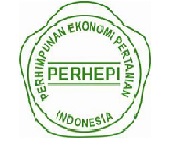Pelatihan Pemanfaatan Kulit Kedelai menjadi Biskuit untuk Meningkatkan Keterampilan Pengrajin Tempe Desa Parerejo Pasuruan
Abstract
Keywords
Full Text:
PDF (Bahasa Indonesia)References
Adesh, A. B., Gopalakrishna, B., Kusum, S. A., & Tiwari, O. (2012). An Overview on Stevia: A Natural Calorie Free Sweetener. International Journal Of Advances In Pharmacy, Biology And Chemistry (IJAPBC), 1(3), 362–368.
Fairudz, A., & Nisa, K. (2015). Pengaruh serat pangan terhadap kadar kolesterol penderita overweight. Jurnal Majority, 4(8).
Goldsmith, L., & Sucralose, M. C. (2001). Alternative sweeteners. In: Nabors OL, editor (pp. 185–207). New York: Marcel Dekker.
Grotz, V. L., Henry, R. R., Mcgill, J. B., Prince, M. J., Shamoon, H., Trout, J. R., & Pi-Sunyer, F. X. (2003). Lack of effect of sucralose on glucose homeostasis in subjects with type 2 diabetes. Journal of the American Dietetic Association, 103(12), 1607-1612. https://doi.org/10.1016/j.jada.2003.09.021
Hanifa, R., Hintono, A., & Pramono, Y. B. (2013). Kadar protein, kadar kalsium, dan kesukaan terhadap cita rasa chicken nugget hasil substitusi terigu dengan mocaf dan penambahan tepung tulang rawan. Jurnal Pangan Dan Gizi, 4(8), 53-54. https://doi.org/10.26714/jpg.4.2.2013.%25p
Haryani, A. T., Andini, S., & Hartini, S. (2017). Kadar gizi, pati resisten, dan indeks glikemik biskuit gandum utuh (Triticum aestivum L) varietas DWR-162. Jurnal Teknologi Pangan Dan Hasil Pertanian, 12(1), 1-12. http://dx.doi.org/10.26623/jtphp.v12i1.470
He, Y., Wang, B., Wen, L., Wang, F., Yu, H., Chen, D., Su, X., & Zhang, C. (2022). Effects of dietary fiber on human health. In Food Science and Human Wellness, 11(1), 1-10. https://doi.org/10.1016/j.fshw.2021.07.001
Jariyah, J., Winarti, S., & Agrita, I. (2018). Glycemic index of snack bar from pedada fruit flours (Sonneratia caseolaris) and legumes flour. Proceedings of the International Conference on Science and Technology (ICST 2018), 1, 110-113. https://doi.org/10.2991/icst-18.2018.24
Jariyah, Winarti, S., Sarofa, U., & Subagio, M. R. (2022). Study of the influence of stevia and fructose to the physicochemical characteristics of mocaf-pedada biscuits. Proceedings of the 6th International Conference of Food, Agriculture, and Natural Resource (IC-FANRES 2021), 16, 337-341. https://doi.org/10.2991/absr.k.220101.045
Khoirunisa, H. (2021). Karakteristik sensoris dan kandungan serat biskuit dari jantung pisang (Musa paradisiaca) sebagai makanan selingan anak obesitas. Jurnal Teknologi Pangan Dan Kesehatan (The Journal of Food Technology and Health), 1(2), 93-100. https://doi.org/10.36441/jtepakes.v1i2.188
Latief, I., Rasyid, A. R., Mujahid, L. M. A., Ekawati, S. A., & Yanti, S. A. (2019). Penyuluhan dan Pendampingan Pemetaan Partisipatif di Kecamatan Anggeraja Kabupaten Enrekang. JURNAL TEPAT : Applied Technology Journal for Community Engagement and Services, 2(1), 43-51. https://doi.org/10.25042/jurnal_tepat.v2i1.59
Mishra, P., Singh, R., Kumar, U., & Prakash, V. (2010). Stevia rebaudiana - A magical sweetener. Global Journal of Biotechnology & Biochemistry, 5, 62–74.
Nelwida. (2011). Pengaruh pemberian kulit ari biji kedelai hasil fermentasi dengan aspergillus niger dalam ransum terhadap bobot karkas ayam pedaging. Jurnal Ilmiah Ilmu-Ilmu Peternakan Universitas Jambi, XIV(1), 23-29. https://doi.org/10.22437/jiiip.v0i0.584
Putri, A. D., Zuhro, F., Mauludin, I., & Habib, A. (2018). Analisis gizi limbah ampas kedelai sebagai tepung subtitusi mie untuk menunjang sumber belajar mata kuliah biokimia. BIOEDUSAINS: Jurnal Pendidikan Biologi Dan Sains, 1(1), 11–22. https://doi.org/https://doi.org/10.31539/bioedusains.v1i1.249
Rauf, R., & Sarbini, D. (2012). Pengaruh bahan penstabil terhadap sifat fisiko-kimia yoghurt yang dibuat dari tepung kedelai rendah lemak. Seminar Nasional IX Pendidikan Biologi, 9(1), 484–489.
Risti, Y., & Rahayuni, A. (2013). Pengaruh penambahan telur terhadap kadar protein, serat, tingkat kekenyalan dan penerimaan mie basah bebas gluten berbahan baku tepung komposit. (Tepung komposit : tepung mocaf, tapioka dan maizena). Journal of Nutrition College, 2(4). https://doi.org/10.14710/jnc.v2i4.3833
Rizqiya, F., & Syafiq, A. (2019). Asupan serat sebagai faktor dominan obesitas perempuan pralansia. Jurnal Manajemen Kesehatan Yayasan RS. Dr. Soetomo, 5(1), 6-17. https://doi.org/10.29241/jmk.v5i1.152
Salim, E. (2011). Mengolah singkong menjadi tepung mocaf bisnis produk alternatif pengganti terigu. Yogyakarta: Lily Publisher.
Sari, Y. D., Prihartini, S., & Brantas, K. (2014). Asupan serat makanan dan kadar kolesterol-LDL. Penelitian Gizi Dan Makanan, 37(1), 51-58. http://ejournal.litbang.depkes.go.id/index.php/pgm/article/view/4008
Setyawati, V. A. V., & Rimawati, E. (2016). Pola konsumsi fast food dan serat sebagai faktor gizi lebih pada remaja. Unnes Journal of Public Health, 5(3), 275-284. https://doi.org/10.15294/ujph.v5i3.16792
Soliman, G. A. (2019). Dietary fiber, atherosclerosis, and cardiovascular disease. Nutrients, 11(5), 4-11. https://doi.org/10.3390/nu11051155
Šottníková, V., Langová, R., Hřivna, L., Nedomová, Š., & Juzl, M. (2019). Quality of biscuits as affected by addition of fibre. Potravinarstvo Slovak Journal of Food Sciences, 13(1), 206-211. https://doi.org/10.5219/1034
Suknia, S. L., & Rahmani, T. P. D. (2020). Proses pembuatan tempe home industry berbahan dasar kedelai (Glycine max (L.) Merr) dan kacang merah (Phaseolus vulgaris L.) di Candiwesi, Salatiga. Southeast Asian Journal of Islamic Education, 3(1), 59-76. https://doi.org/10.21093/sajie.v3i1.2780
DOI: https://doi.org/10.20961/prima.v6i1.56146
Refbacks
- There are currently no refbacks.
View My Stats

This work is licensed under a Creative Commons Attribution-ShareAlike 4.0 International License.


.jpg)



1.jpg)











